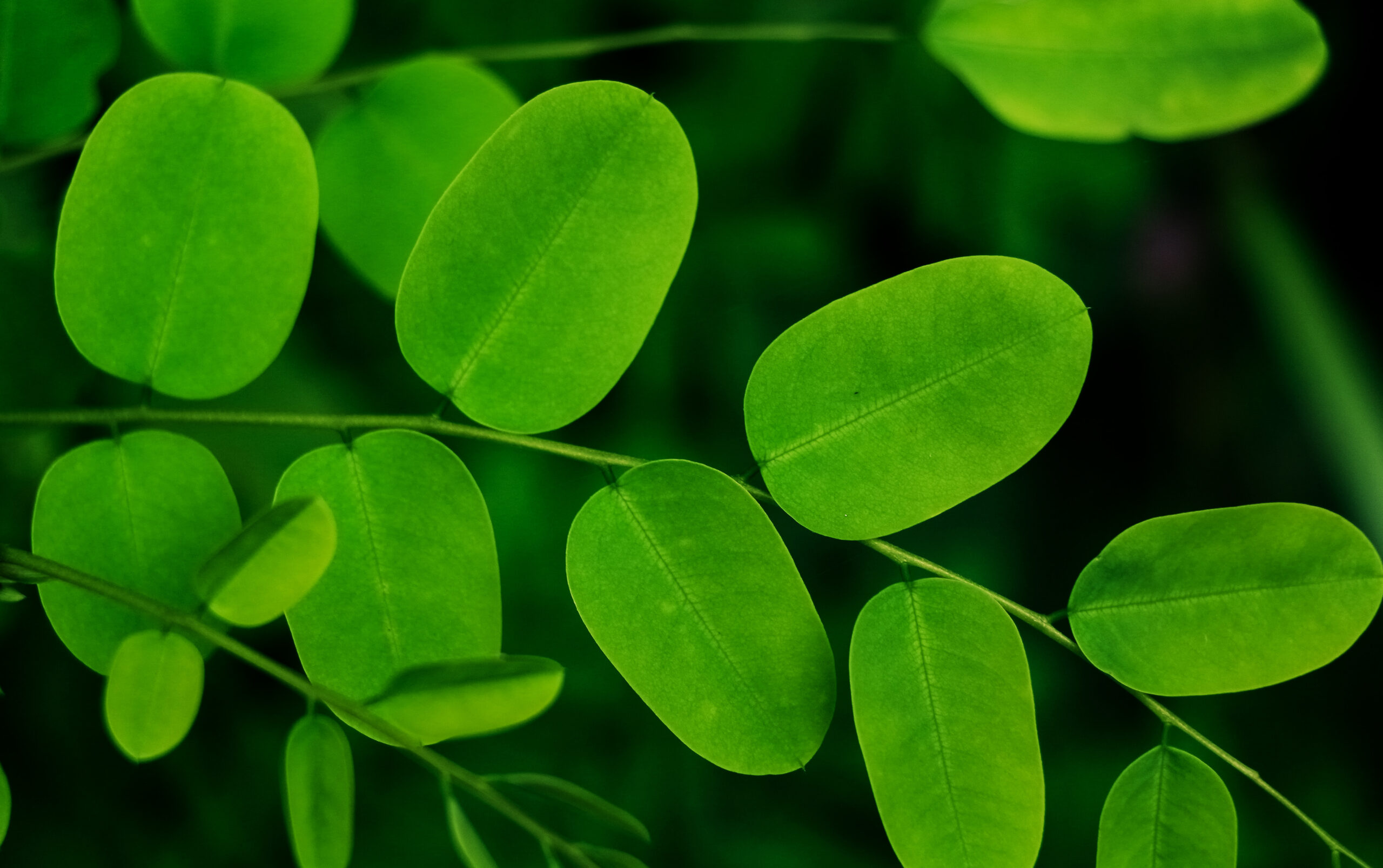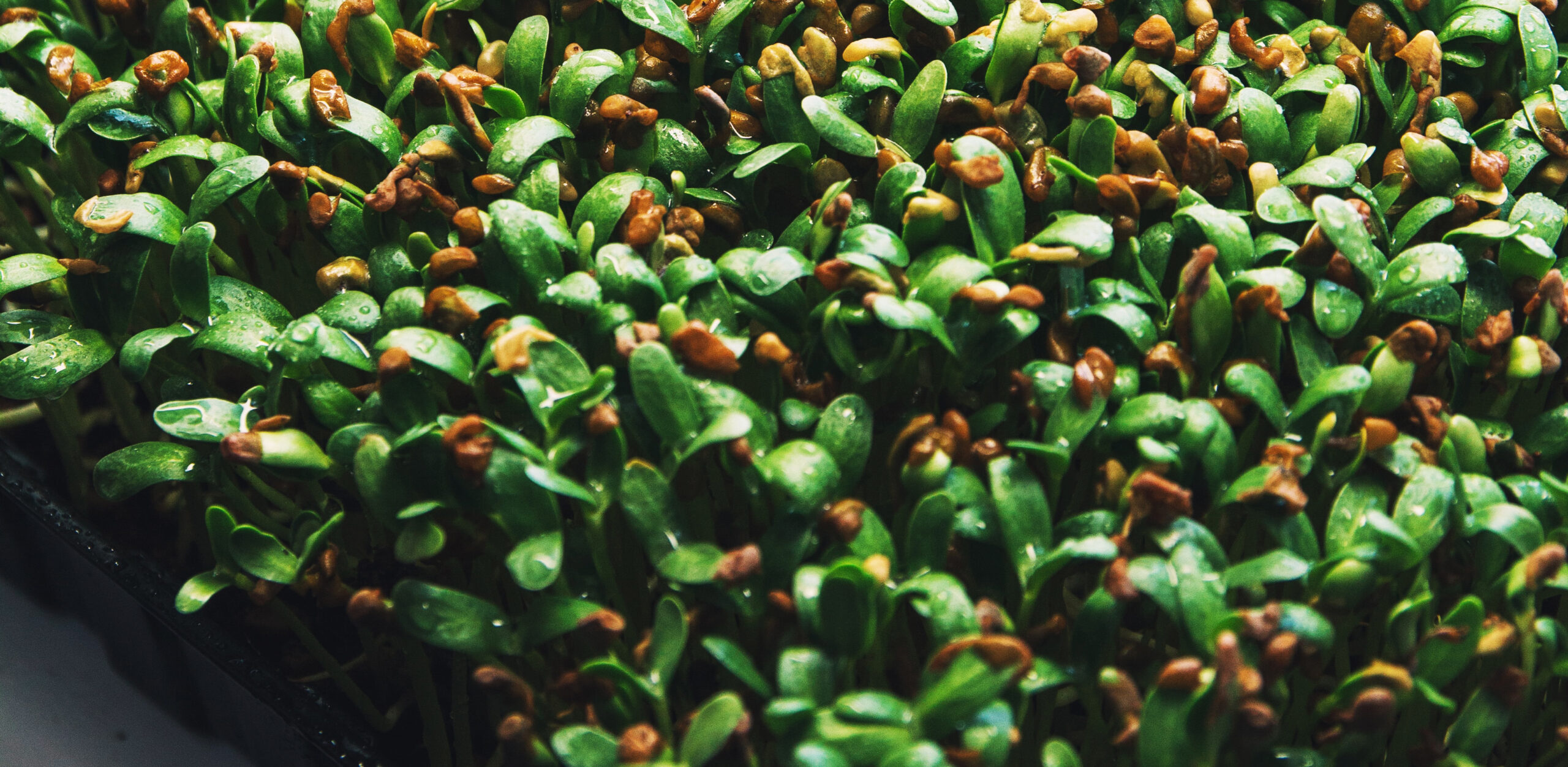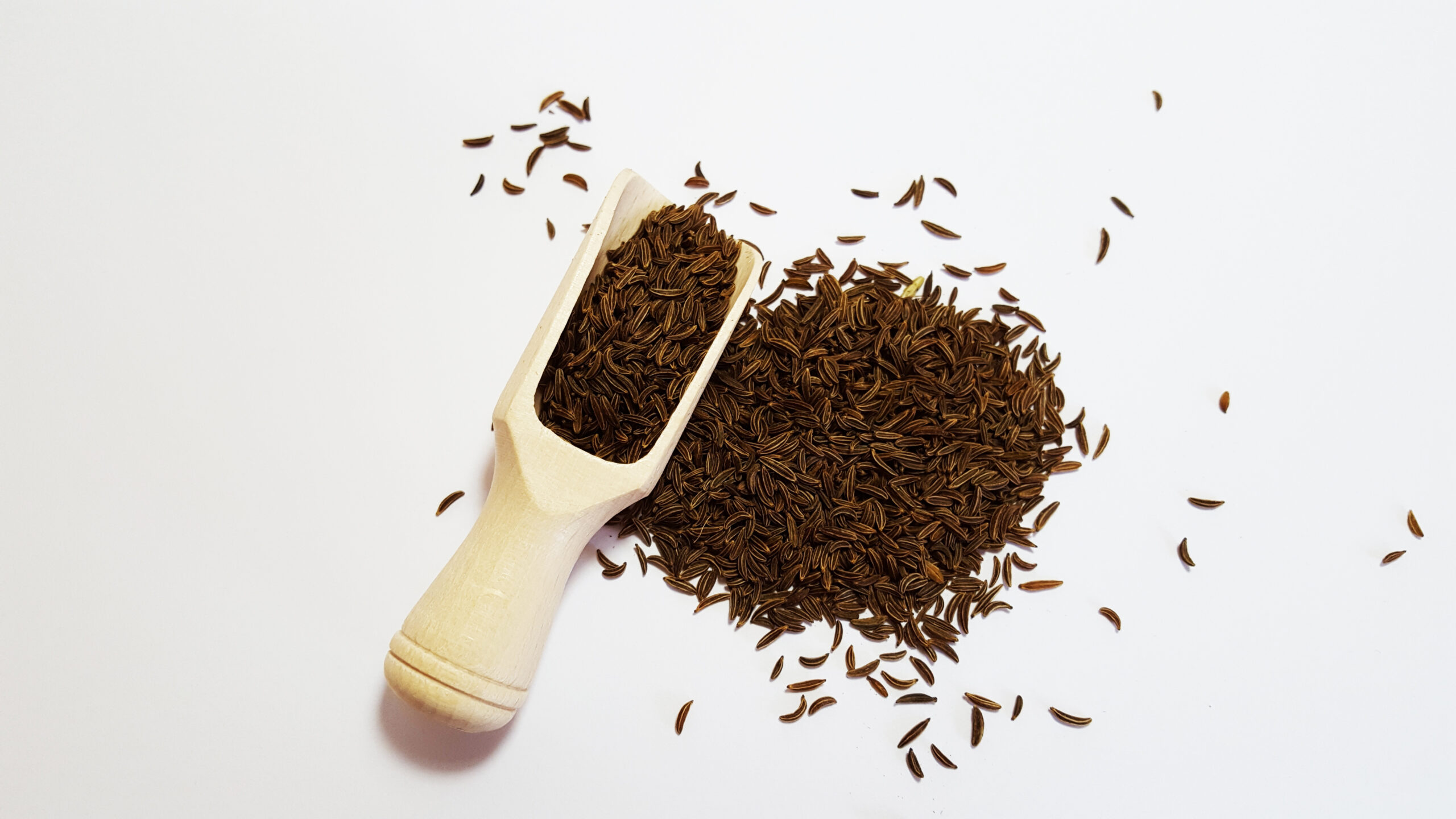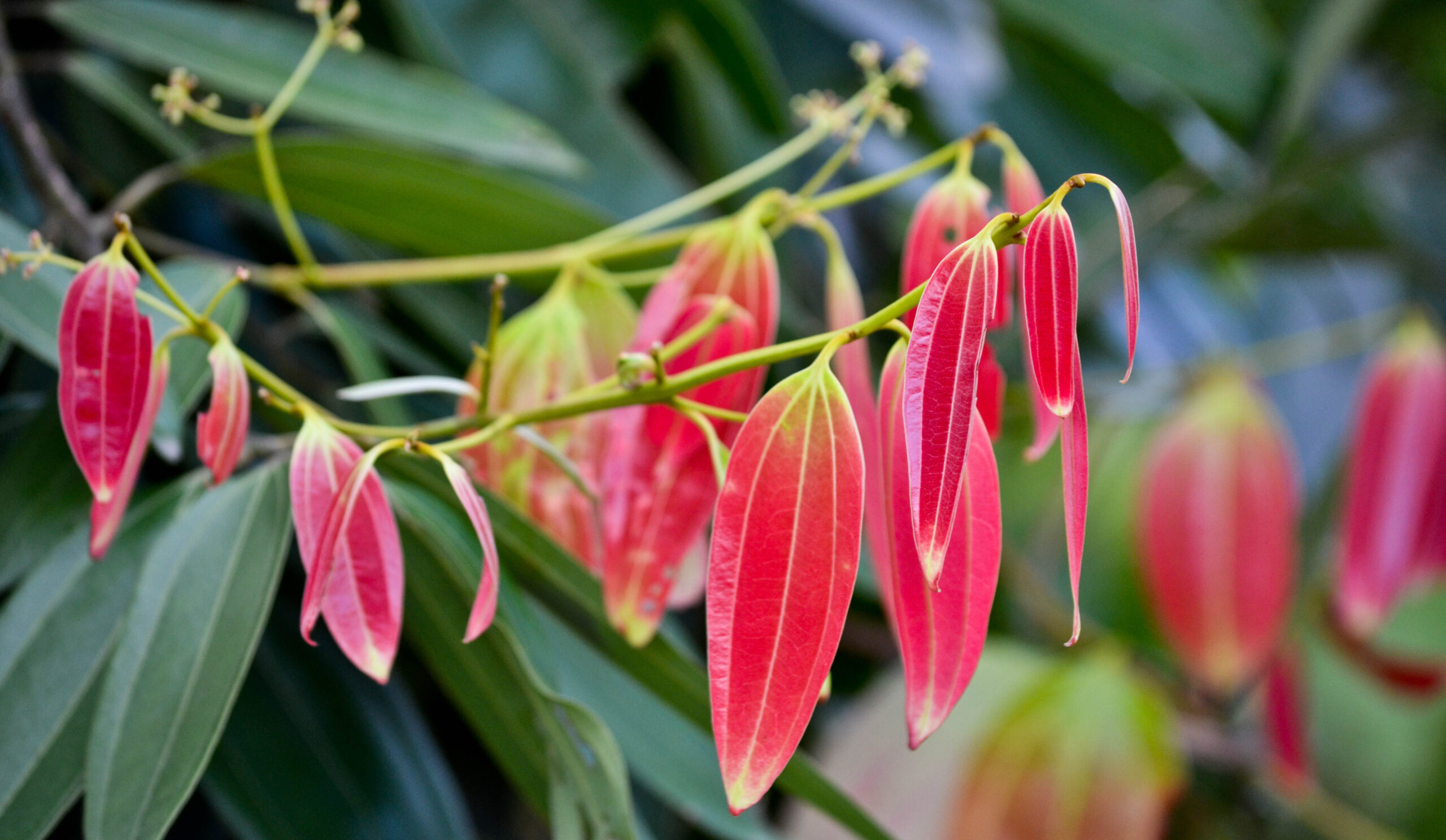Moringa Oleifera, hailed as the “Miracle Tree” and “Drumstick Tree,” is a nutritional powerhouse found in various parts of the world, especially in the tropics and has been touted for its medicinal and health benefits for thousands of years. With its remarkable ability to thrive in arid conditions and its resistance to pests, moringa has been a life-saver in impoverished regions, offering sustenance and health benefits in equal measure.
Moringa oleifera belongs to the Moringaceae family and is the most widely cultivated species among 13 varieties of the genus Moringa. Native to the Himalayan foothills of northern India and parts of Africa, this plant has quickly spread across the tropics and subtropics, cementing its reputation as a versatile and resilient plant.
From its leaves and pods to its seeds and bark, nearly every part of the moringa tree can be utilized for nutritional or medicinal purposes. Due to its robust nutritional profile, the tree’s by-products have been incorporated into traditional diets across Asia and Africa.
Moringa’s origins trace back to ancient India, where it played a pivotal role in Ayurvedic medicine. Records indicate that this herb was used to treat over 300 ailments, showcasing its therapeutic versatility. From being a remedy for skin diseases to its use as an antiseptic, the multifaceted benefits of moringa were well acknowledged.
Over time, its popularity traversed the boundaries of India, reaching ancient Egypt, Greece, and Rome. Its oil, extracted from the seeds, was treasured in Egypt for its skin moisturizing and protective properties against the harsh desert winds. The Romans and Greeks used the oil for its fragrant properties in perfumes and also recognized its therapeutic qualities.
With the spread of trade routes and globalization, moringa seeds reached other parts of Africa and later the Americas, where its reputation as a health-enhancing plant continued to flourish. This article unveils the nutritional powerhouse that is moringa, offering insights into its rich history and transformative health properties.
Table of Contents
Cultivation of Moringa Oleifera
Chemical Composition of Moringa Oleifera
General Health Benefits of Moringa Oleifera
Moringa Oleifera Leaves
Nutrient-Rich
Antioxidant Properties
Anti-Inflammatory Effects
Lower Blood Sugar Levels
Cholesterol Reduction
Neuroprotective Benefits
Antimicrobial and Antibacterial
Moringa Oleifera Seeds
Heart Health
Antioxidant Properties
Anti-Inflammatory
Antimicrobial Effects
Water Purification
Joint Health
Supplementation
Conclusion
Cultivation of Moringa Oleifera
Moringa, often termed the “Miracle Tree,” thrives primarily in tropical and subtropical regions. Its cultivation is straightforward, as it flourishes in a variety of soil types, though it prefers a sandy or loamy substrate. Remarkably drought-resistant, moringa is well-suited to arid conditions, needing minimal water once established. Seeds are typically sown just beneath the soil surface, and with adequate sunlight, they germinate within 5-12 days. While the tree grows rapidly, reaching up to 3 meters in its first year, it requires regular pruning to maintain a bushy, more accessible form. The resilience and low-maintenance nature of moringa make it an ideal crop for sustainable farming.
“Moringa oleifera, often dubbed the “Miracle Tree,” truly stands as a testament to nature’s potency.”
Moringa oleifera, commonly known as the drumstick tree, is remarkably adaptable and can grow in various climatic conditions. However, it thrives best in the following conditions:
- Temperature: Moringa prefers tropical to subtropical climates. It thrives at temperatures between 25°C and 35°C but can tolerate temperatures up to 48°C. In cold conditions, moringa can withstand light frosts but may lose its leaves, although the tree itself can recover once conditions warm up.
- Rainfall: While the tree is drought-tolerant and can endure periods of water scarcity, an annual rainfall of 250-1500mm is ideal. Excessive rainfall or waterlogged conditions can be detrimental, as the tree prefers well-drained soils.
- Altitude: Moringa grows best at altitudes ranging from sea level up to 2000 meters.
- Soil: It can tolerate a variety of soil types, including sandy, loamy, and even slightly clayey soils. However, the tree prefers slightly acidic to slightly alkaline pH levels, ranging from 6.3 to 7.5. Well-drained soils are essential to prevent root rot.
Geography
Moringa oleifera, known for its versatility and adaptability, is cultivated in various regions of the world. Here are the primary regions:
- South Asia: Originally native to the foothills of the Himalayas in northern India, moringa has been traditionally grown in various parts of the Indian subcontinent for centuries.
- Africa: Moringa is extensively cultivated in West African countries, including Senegal, Niger, and Nigeria. Its cultivation has spread to East and Southern Africa as well.
- South America and Central America: Countries such as Brazil, Nicaragua, and Haiti have introduced moringa cultivation due to its nutritional and therapeutic potential.
- Southeast Asia: The Philippines, Cambodia, and Indonesia are some of the Southeast Asian countries where moringa is grown, both for local consumption and export.
- Pacific Islands: Due to its salt-resistant properties, moringa is also cultivated in some Pacific Islands.
- Caribbean: Countries like Jamaica and the Dominican Republic have begun growing moringa, leveraging its health benefits.
It’s also worth noting that as awareness of moringa’s benefits grows globally, its cultivation is expanding to non-traditional regions, especially in places with suitable climatic conditions.
(Source: Alessandro Leone et al., 2015)
Chemical Composition of Moringa Oleifera
Moringa oleifera, often dubbed the “Miracle Tree,” is a nutrient-rich plant renowned for its multifaceted health benefits. Both its leaves and seeds boast an impressive chemical composition. Let’s delve into the constituents of the leaves and seeds and their respective health implications.
Moringa Leaves
- Vitamins:
- Vitamin A (as beta-carotene): Essential for vision, skin health, and immune function.
- Vitamin C: Acts as an antioxidant and is vital for collagen synthesis and immune function.
- Vitamin E: A fat-soluble antioxidant that protects cells from oxidative stress.
- B-vitamins (B1, B2, B3, B6): Play a crucial role in energy metabolism and the functioning of the nervous system.
- Minerals:
- Calcium: Essential for bone health and muscle function.
- Potassium: Maintains electrical gradients in the body’s cells and is crucial for heart function.
- Iron: Necessary for the formation of red blood cells and transporting oxygen in the blood.
- Magnesium: Important for various biochemical reactions in the body.
- Zinc: Plays a role in immune function, protein synthesis, and DNA synthesis.
- Proteins: Comprising all the essential amino acids, moringa leaves are a great protein source, particularly for vegetarian diets.
- Antioxidants: Compounds like quercetin, chlorogenic acid, beta-carotene, and zeatin, which neutralize free radicals in the body, thereby reducing oxidative stress and inflammation.
Moringa Seeds
- Fatty Acids: Primarily:
- Behenic acid: Often used in hair conditioners and moisturizers because of its conditioning properties.
- Oleic acid: A monounsaturated fat that’s beneficial for heart health.
- Vitamins: Vitamin E and Vitamin C, which have antioxidant properties.
- Antioxidant Compounds: Like those in leaves, moringa seeds also contain quercetin and chlorogenic acid.
- Phytosterols: Such as β-sitosterol, stigmasterol, and campesterol. These compounds have cholesterol-lowering properties.
- Proteins: Like the leaves, moringa seeds also contain proteins, though in varying quantities.
- Water Purifying Agents: Seeds have been recognized for their ability to purify water. When crushed, they release a protein that binds to impurities and pathogens, causing them to coagulate and settle down.
When interpreting content ratios or percentages, it’s essential to note that these can vary based on growing conditions, the plant’s maturity level, and specific cultivar differences. It’s always advisable to refer to the specific studies for detailed breakdowns.
(Source: M.M. Özcan, 2020)
General Health Benefits of Moringa Oleifera
Moringa oleifera, often termed the “Miracle Tree,” stands out for its myriad health benefits. Its leaves are a nutritional powerhouse, packed with essential vitamins like A, C, and E, and minerals like calcium and potassium. Rich in antioxidants, they combat oxidative stress, potentially protecting against chronic diseases. The leaves also show promise in reducing blood sugar and LDL cholesterol levels. Meanwhile, the seeds, rich in heart-healthy monounsaturated fats, exhibit anti-inflammatory and antimicrobial properties. Notably, crushed moringa seeds have been used in water purification, binding to impurities to make water safer for consumption. This unique blend of benefits positions moringa as a significant contributor to holistic health. Moringa oleifera, both its leaves and seeds, boasts an impressive array of health benefits owing to its dense nutritional profile. Here are the general health benefits for each:
Moringa Oleifera Leaves
Nutrient-Rich: Moringa oleifera leaves are often heralded as a “superfood” due to their exceptional nutrient profile. They serve as a substantial source of essential vitamins, notably vitamins A, C, and E, which play crucial roles in vision, immunity, and combating oxidative stress, respectively. Rich in minerals, the leaves provide significant amounts of calcium, crucial for bone health; potassium, key for heart and muscle function; and iron, vital for blood health. Beyond this, moringa leaves offer a full complement of essential amino acids, making them a rare plant-based complete protein source. The combination of these nutrients underscores moringa’s potential as a nutritional supplement, particularly in regions battling malnutrition (Zahidul Islam et al., 2021).
Antioxidant Properties: Antioxidants are compounds that neutralize harmful free radicals, unstable molecules that can damage cells, leading to oxidative stress and increasing the risk of chronic diseases. Moringa oleifera leaves are laden with potent antioxidants, including quercetin, chlorogenic acid, beta-carotene, and zeatin. When consumed, these antioxidants bind to free radicals, rendering them harmless. Additionally, the synergistic effect of the mix of antioxidants in moringa may enhance their efficacy. As oxidative stress is linked to aging, inflammation, and various diseases, including cancer and heart disease, the antioxidant properties of moringa leaves play a pivotal role in potentially delaying the onset of these conditions and promoting overall health (Rocío Peñalver et al., 2022).
Anti-Inflammatory Effects: Inflammation is a vital protective response to injury or infection, but chronic inflammation can contribute to numerous diseases, including heart disease, arthritis, and cancer. Moringa oleifera leaves contain natural compounds, like isothiocyanates, quercetin, and chlorogenic acid, that exhibit anti-inflammatory properties. These compounds act by inhibiting the body’s pro-inflammatory pathways and enzymes, such as NF-kB and the COX-2 enzyme, ultimately reducing the production of inflammatory cytokines and signals. By mitigating these pathways, Moringa oleifera leaves can help dampen excessive inflammation, making them potentially beneficial in preventing or managing inflammatory-related conditions and promoting overall health (Yong-Bing Xu et al., 2019).
Lower Blood Sugar Levels: Moringa oleifera leaves have demonstrated potential in managing blood sugar levels, a crucial factor in diabetes control. They contain compounds like isothiocyanates, which have hypoglycemic effects. When consumed, these compounds can enhance insulin secretion or improve its activity, thereby facilitating efficient uptake of glucose from the bloodstream into cells. Additionally, the chlorogenic acid in moringa leaves may slow down the absorption of sugar in the intestines, leading to a more gradual rise in blood sugar after eating. Regular consumption of moringa can, therefore, assist in stabilizing blood sugar fluctuations, potentially offering support in diabetes management and prevention (Karina Vargas-Sánchez et al., 2019).
Cholesterol Reduction: Moringa oleifera leaves have been recognized for their cholesterol-lowering properties, a factor that’s essential for cardiovascular health. They contain compounds known as beta-sitosterols, which are structurally similar to cholesterol. When consumed, beta-sitosterols compete with dietary cholesterol for absorption in the intestines, resulting in reduced intestinal cholesterol uptake. Additionally, the leaves are rich in antioxidants and anti-inflammatory compounds that can further promote heart health by reducing oxidative stress and inflammation in blood vessels. Thus, regular intake of Moringa oleifera leaves can contribute to a decrease in LDL (bad) cholesterol levels in the bloodstream, reducing the risk of atherosclerosis and associated cardiovascular diseases (Majambu Mbikay et al., 2012).
Neuroprotective Benefits: Moringa oleifera leaves exhibit neuroprotective qualities, crucial for maintaining brain health and preventing neurodegenerative disorders. They are rich in antioxidants like quercetin, beta-carotene, and vitamin C, which neutralize neurotoxic free radicals, preventing oxidative damage to brain cells. Moreover, the leaves possess anti-inflammatory compounds that can reduce inflammation in neural pathways, a known factor in many neurodegenerative conditions. Additionally, the rich content of brain-supporting nutrients, such as omega-3 fatty acids and amino acids, helps in the maintenance and repair of brain cells. Thus, consuming Moringa oleifera leaves might bolster cognitive functions, memory, and overall brain health, while potentially offering protection against disorders like Alzheimer’s (Farah J. Hashim et al., 2021).
Antimicrobial and Antibacterial: Moringa oleifera leaves are armed with compounds that exhibit antimicrobial and antibacterial properties. These compounds, including pterygospermin and benzyl isothiocyanate, disrupt the cell membranes of harmful bacteria and inhibit their vital metabolic processes, effectively curbing their growth or killing them outright. Furthermore, the bioactive compounds in moringa can interfere with DNA synthesis in certain bacteria, impairing their ability to multiply. In some cases, moringa compounds even interfere with bacterial quorum sensing, a process bacteria use to communicate and coordinate actions, reducing their virulence. As a result, Moringa oleifera leaves can combat a range of pathogens, reinforcing the body’s defenses against infections (S Jahan et al., 2022, Saroj K. Pal et al., 1995).
Moringa Oleifera Seeds
Heart Health: Moringa Oleifera seeds play a noteworthy role in promoting heart health. Primarily, the oil extracted from the seeds is abundant in oleic acid, a monounsaturated fatty acid known for its cardio-protective properties. Oleic acid helps reduce bad LDL cholesterol, maintain good HDL cholesterol, and prevent the buildup of arterial plaque, reducing the risk of atherosclerosis. Additionally, moringa oleifera seeds contain antioxidant compounds which combat oxidative stress, a key factor in cardiovascular disease. They also house phytosterols, like β-sitosterol, which have cholesterol-lowering effects. Furthermore, their anti-inflammatory properties help reduce inflammation in the cardiovascular system. Together, these attributes make moringa oleifera seeds a heart-healthy choice (Yan-Jie Li et al., 2020, Joseph I Randriamboavonjy et al., 2016).
Antioxidant Properties: Moringa oleifera seeds are packed with antioxidants that play a crucial role in neutralizing harmful free radicals within the body. Free radicals, generated from metabolic processes or external factors, can cause oxidative stress, which is linked to aging and various chronic diseases. The seeds contain antioxidants like quercetin, zeatin, and vitamin E. When ingested, these antioxidants donate electrons to free radicals, stabilizing them and preventing cellular damage. Furthermore, moringa seeds enhance the body’s intrinsic antioxidant enzymes, bolstering the body’s natural defense mechanisms. By combatting oxidative stress, the antioxidant properties of Moringa oleifera seeds help in preventing cellular damage, reducing inflammation, and protecting against chronic diseases (Lili Liang et al., 2019, Sadaf Tariq et al., 2022).
Anti-Inflammatory: Moringa oleifera seeds contain bioactive compounds that exhibit potent anti-inflammatory properties. Inflammation, while essential for body defense, can be detrimental when chronic. The seeds contain natural compounds, notably isothiocyanates and quercetin, that modulate inflammatory pathways. These compounds act by inhibiting the production and action of pro-inflammatory molecules and cytokines, like NF-kB and interleukins. Additionally, the seeds’ rich antioxidant content further complements their anti-inflammatory effects by reducing oxidative stress, which can trigger inflammation. Together, these properties ensure that Moringa oleifera seeds help in curbing excessive inflammation, potentially aiding in the prevention and management of chronic inflammatory conditions like arthritis and cardiovascular diseases (Corrêa Araújo L. C. et al., 2013, Mohsen Minaiyan et al., 2014).
Antimicrobial Effects: Moringa oleifera seeds possess potent antimicrobial properties, which can combat a variety of pathogens. These seeds contain unique proteins and compounds that disrupt the growth and vitality of harmful microorganisms. For instance, the seeds produce a specific protein that can disrupt the cell wall of bacteria, leading to cellular leakage and eventual death of the bacterium. Additionally, other compounds in the seeds can interfere with microbial metabolic processes, inhibiting their growth and replication. Moreover, moringa seeds have demonstrated efficacy against waterborne pathogens, making them especially valuable for water purification in areas with limited resources. The combined antimicrobial effects offer protection against a broad spectrum of infectious agents (Attilio Anzano et al., 2022).
Water Purification: Moringa oleifera seeds have a remarkable ability to purify water, leveraging their natural flocculating agents. When crushed, the seeds release proteins that possess a positive charge. These proteins bind to the negatively charged particles (like dirt, bacteria, and other contaminants) suspended in water. This binding process causes the particles to aggregate, forming larger clumps known as flocs. These flocs, due to their increased size, settle to the bottom of the container more rapidly. The clear water on top can then be decanted, significantly reducing turbidity and microbial contamination. Thus, Moringa seeds offer a sustainable, low-cost solution to water purification, especially in regions lacking access to conventional treatment methods (Wendesen Mekonin Desta et al., 2021).
Joint Health: Moringa oleifera seeds contribute positively to joint health, primarily through their anti-inflammatory and antioxidant properties. Chronic inflammation is a key factor in many joint disorders, like osteoarthritis. The bioactive compounds in moringa seeds, such as quercetin and isothiocyanates, can suppress pro-inflammatory cytokines and enzymes, reducing inflammation in joints. Simultaneously, the potent antioxidants present combat oxidative stress, which can damage joint tissues and exacerbate inflammation. Furthermore, some studies suggest moringa’s potential to protect against cartilage degradation. Therefore, regular consumption of Moringa oleifera seeds might alleviate joint pain, reduce inflammation, and support overall joint mobility and health (Alessandro Leone et al., 2016).
Incorporating moringa, whether in leaf or seed form, into one’s diet can offer numerous health benefits. However, like any supplement or food, it’s essential to consume it in moderation and consult with a healthcare professional, especially if considering it for therapeutic uses.
Supplementation
Moringa oleifera, often celebrated for its health benefits, should be consumed judiciously. While typically safe when ingested in dietary amounts, excessive intake might induce side effects, including digestive disturbances. Moringa may also enhance the effects of some medications, notably those for hypertension and diabetes. Pregnant women should avoid moringa seeds due to potential anti-fertility properties. As always, before starting any supplementation, consulting a healthcare professional is recommended.
Recommended Dosage
While there isn’t a universally agreed-upon dosage for moringa, some studies have suggested specific amounts based on the benefit being sought:
- For Lowering Blood Sugar: 50 grams of moringa leaves has been used in a meal for this purpose.
- For Lowering Cholesterol: 7 grams of moringa leaf powder daily for three weeks has been used in research settings.
However, these dosages come from limited studies, and it’s essential to consult with a healthcare professional before starting supplementation.
Side Effects
Moringa, when consumed within the commonly recommended amounts, is generally considered safe. However, excessive consumption might lead to potential side effects:
- Leaves: May possess mild laxative effects or increase digestive activity in some individuals.
- Seeds: Consuming large amounts might result in digestive disturbances or toxicity.
Safety Considerations
- Antinutrient Content: Moringa leaves contain antinutrients, substances that reduce the body’s ability to absorb essential nutrients. However, in typical dietary amounts, this is not usually a concern.
- Medication Interactions: Moringa might amplify the effects of certain medications, especially those for hypertension and diabetes. It’s essential to consult a doctor if you’re on these medications and considering moringa supplementation.
- Pregnancy: It’s advised to avoid moringa seeds during pregnancy as they might possess anti-fertility qualities. The roots and bark contain chemicals that can cause uterine contractions.
(Source: Mbikay, M. et al., 2012, Stohs, S. J. et al., 2015)
To conclude, while moringa offers a multitude of health benefits, it’s essential to approach its supplementation cautiously. Always begin with smaller amounts to assess your body’s reaction and consult with a healthcare expert, especially if on medications or pregnant.
Conclusion
Moringa oleifera, often dubbed the “Miracle Tree,” truly stands as a testament to nature’s potency. Originating from the Indian subcontinent, this plant has expanded its roots, both literally and culturally, across different continents and civilizations. Its leaves and seeds, dense with a plethora of nutrients and bioactive compounds, exhibit an impressive range of health benefits. From antioxidant and anti-inflammatory effects to blood sugar and cholesterol management, moringa showcases a holistic approach to health. Moreover, its capacity for water purification emphasizes its broader ecological and health-related applications.
However, like all potent natural remedies, moderation and informed consumption are vital. Overindulgence can lead to adverse effects, and potential interactions with medications necessitate caution. Pregnant individuals should exercise particular care due to the seeds’ potential anti-fertility properties. In a world where natural and sustainable health solutions are increasingly sought after, Moringa oleifera emerges as a front-runner. Yet, as with all things, respect for its power and a balanced approach in its application will yield the best results. In sum, Moringa oleifera, with its myriad of benefits and versatile uses, offers a promising avenue for both nutrition and holistic well-being, making its title as a “miracle” hardly an exaggeration.
Disclaimer: The information on this page is not intended to be a substitute for professional medical advice. Do not use this information to diagnose or treatment of men’s and women’s sexual health and general health conditions without consulting the doctor. While we review and promote nutrients, herbs, Ayurvedic medicines, and alternative therapies for men’s and women’s sexual health and general health conditions, you must consult an authorized physician before taking any of the products.





























